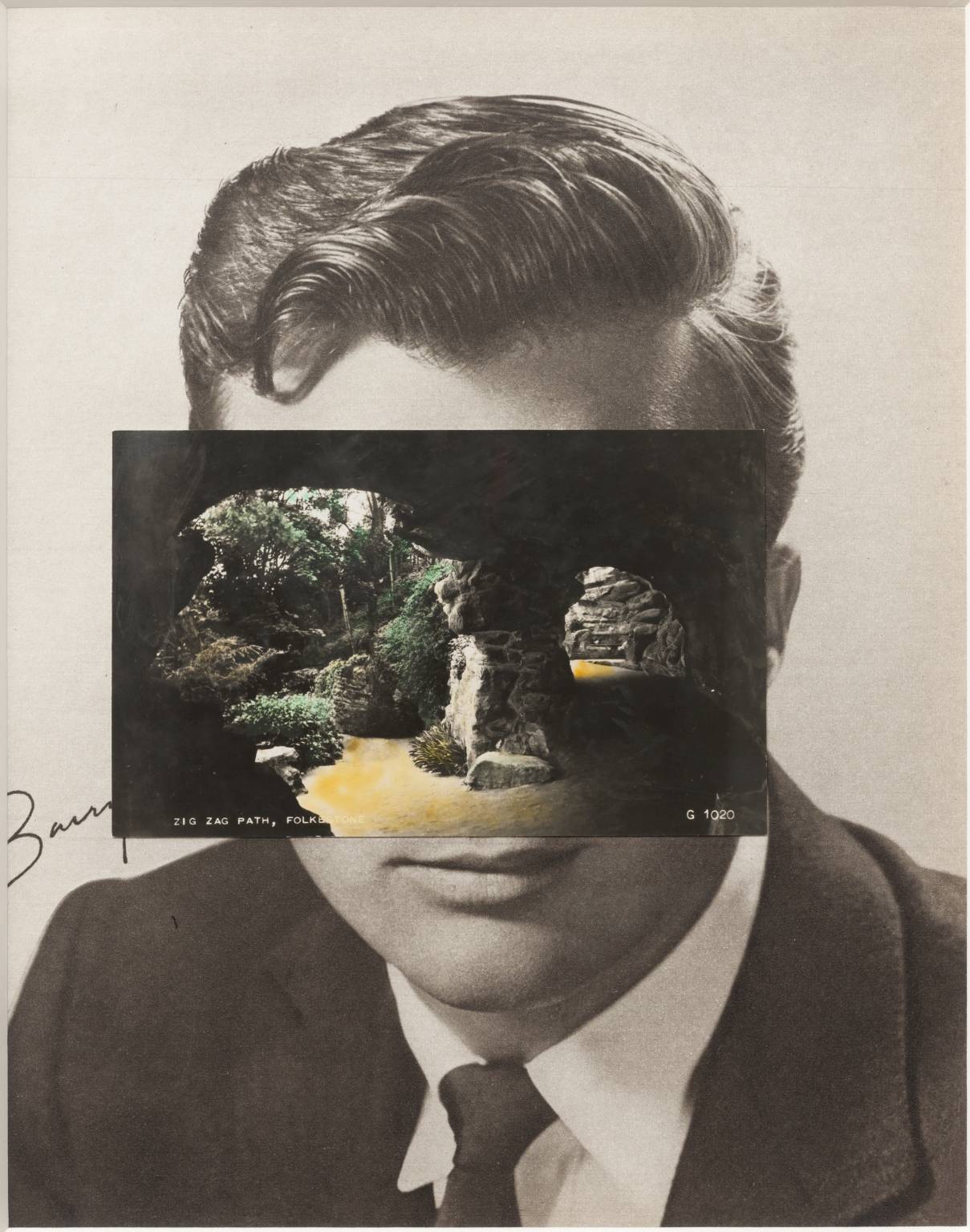https://www.saatchigallery.com/artists/john_stezaker.htm
John Stezaker is a contemporary British Conceptual artist who is best known for his collages of found images taken on postcards, film stills and commercial photographs. Stezaker’s work resembles early Surrealist and Dada collages.
With surgical like precision, Stezaker overlays distinct images to create new personalities, landscapes and scenes. “I’m using an archive to create another archive of my own,” he elaborates. “My ideal is to do very little to the images, maybe just one cut: the smallest change or the most minimal mutilation. What I do is destructive, but also an act of deliberate passivity.”
Stezaker has a collection of photographs, some which have been sliced in half diagonally or carefully cut around so that only a silhouette of the face remains. He collects photographs in order to deface them and in the process, create something new. His collages give old images a new meaning. He states that “There is something very odd, even unnerving about cutting through a photograph; It sometimes feels like I am cutting though flesh.”
One of Stezaker’s most famous series is called Mask where he fuses the profiles of glamorous sitters with natural landscapes or architecture to create images of eerie beauty. By simply placing an old coloured postcard of a landscape across a face he creates a strange new world. The end results are both deceptively simple in their execution and oddly disturbing in their suggestion. “When we look at a face, we assume that we are looking behind the face for a personality”, he says, “By making literal that behindness, I often create something that twists into an image of horror”.
I have chosen John Stezaker as one of my references for my personal investigation because I like the concept of hiding the facial features of the subject with a postcard showcasing nature or architecture. When I create my own collages, instead of using postcards I will use archival images depicting countries I have lived in and their most iconic scenery and architecture. These photographs will make the country clearly identifiable through symbolism and well known places or landscapes. These archive images will cover the face from my current self to convey how living in different countries has shaped my current identity. Perhaps I could also capture portraits of my parents since when I think of “home” I associate it with them since I haven’t had a long term house or place I have lived at. In order to replicate Stezaker’s collage style from the series Masks, the archival images will have to blend with the face. Although there will be minimal manipulation to the images, the overall design will have a huge impact.
https://www.tate.org.uk/art/artworks/stezaker-mask-xiv-t12347

The image depicts a collage created by superimposing a postcard on a black and white photograph. The photograph is a film publicity portrait of an unidentifiable actor taken during the 1940s or 1950s. the postcard is a colour image mounted over the actor’s face. It showcases a rocky cavern in which a sandy track curves around a central pillar. The postcard photograph appears to have been taken from inside the cave looking out through two openings towards the light. Stezaker has positioned the card on the actor’s face so that the dark silhouette of the rocky opening and the curvature of the cavern line up with the contours of the actor’s face. This placement creates human features. The two openings to the light suggest eyes connected by the rocky central column which covers the actors face in the position of his nose. This is an unusual composition and is definitely associated with the term “uncertainty” because we as viewers have no idea who the person behind the postcard is. His story is also unknown and we do not know the reason why that image has been associated with him, other than the fact that the suggested facial features of the postcard aligns with the portrait.
